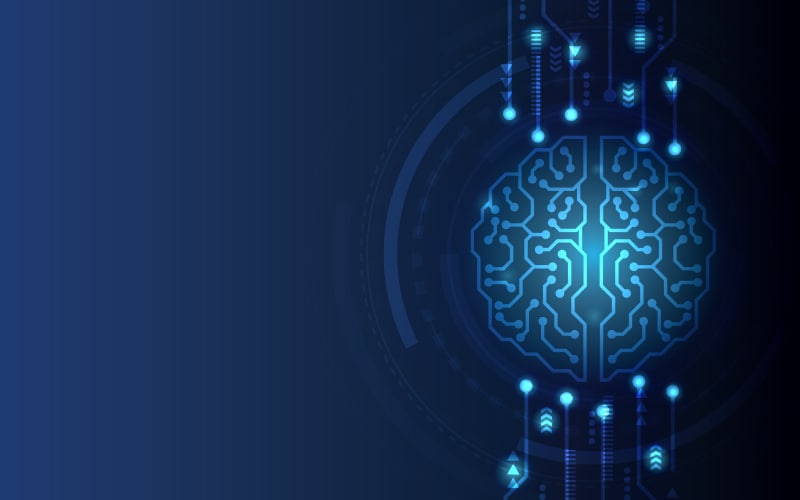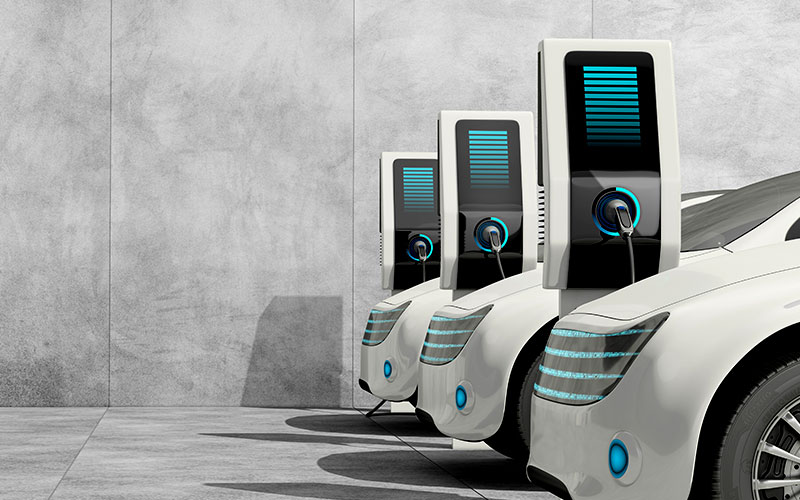Design thinking is taking over big business, helping corporations find innovative solutions to complex problems by putting the customer at the center of the process.
The method, a derivative of the “rational-experimental” problem-solving approach born in the 1970’s, requires the designer to generate human-centric information about a problem. The result is products, services and processes that are highly customer-centric, created through a deep understanding of users’ situations and needs. When done well, design thinking improves the customer experience.
And improving the customer experience is big business. Customer experience investments can return $700 million within three years for the average $1 billion revenue company, according to the Qualtrics XM Institute.1
But it has other benefits as well. Design thinking can unleash the creativity of employees, speed up the process of developing propositions and help generate consensus across diverse teams. In fact, many businesses adopt design thinking practices to help shift their corporate culture to one that is more creative, innovative and customer-focused.
More widely, design thinking allows firms to observe market signals, spot trends and seize the possibilities of disruption. “There’s no longer any distinction between business strategy and the design of the user experience,” says Bridget van Kralingen, senior vice president of a global business services provider.2
But the market is changing. Customers now expect more transparency and ethics in products and services. They also expect more convenience when they interact with a brand. An example is the rise of “one-stop shops,” such as the Auto1 second-hand car service, where customers can buy, insure and finance their car on the same platform. To design propositions that meet these needs, companies have to work with a wider ecosystem of partners, regulators, environmentalists and other stakeholders. A solid service proposition now rests on an intricate and complex web of different systems that deliver value to the end customer.
Design thinking’s weakness is that concepts created aren’t inherently scalable and competitive in a turbulent market
Design thinking’s strength is in forming new propositions; however, its weakness is in ensuring that these new concepts stick within a business, scale effectively and remain competitive in a turbulent market. Given the changing market and the need for external collaboration, this weakness is compounded.
Enter system design, a more holistic design methodology that complements design thinking, extending it into the world of systems thinking and ensuring a higher chance of innovation success.
Designing holistically
System design takes into account the complex relationships between different technologies, processes, people and partners. Understanding the interplay between these elements is important for any new initiative to succeed in a business. Design thinking on its own does not take such a holistic view.
Design thinking is an iterative and linear process that begins with generating insights on customers’ needs, often through ethnographic research. It then involves defining the design challenge and hypothesizing about how to solve the problem. This stage is often done through a collaborative ideation session that brings together a diverse group of stakeholders. This should lead quickly to the creation of a simple prototype that is then tested with users and refined iteratively until it’s ready to be launched as a minimum viable product.
Service design, a subset of design thinking (Figure 1), can be used to support the provision of the newly designed proposition. The result is a service blueprint that maps the interactions between the user and different elements of the service provider. These elements could include a range of things, such as individuals, teams, applications or databases. The limitation of using service design on its own, however, is that this blueprint includes only those systems that they directly touch in the new process. It does not consider the wider ramifications or restrictions that may invalidate the process.
For example, an innovative proposition that has successfully emerged from design thinking and service design processes will still need to gain support from other systems. The underlying technical infrastructure will need both the capacity and resilience to deliver the design requirements. Crucial data will have to be accessed and used under the eye of certain regulatory restrictions. Budgets will need to be aligned, both in terms of timing and flexibility. Indeed, many innovative propositions rely on technologies and products from early-stage start-ups, whereas most large corporations’ procurement policies forbid or hinder such purchases.
Then there are the human elements to consider. Internally, change management, upskilling and re-assigning talent have to be considered. Externally, ethical and environmental considerations need to be taken into account — particularly in this age where citizens are focusing on sustainable and transparent practices. Regulators are also more keenly keeping an eye on privacy and the social and ethical biases that may be designed into new digital innovations.
Figure 1. System design, a methodology derived from systems thinking, complements design thinking and service design in the formation of new propositions.
| Design Thinking | Service Design | Systems Thinking | System Design | ||||
|
|
|
|
Supercharging design
The dirty little secret in corporate innovation is that while many millions of dollars are being invested globally in design thinking to conceptualize new propositions, the vast majority of corporate innovation labs are unable to launch and scale their prototypes in the market. This is typically due to the inability of the design process to tap into the supporting systems, resources, infrastructure and ecosystems that ensure a design concept achieves a significant impact in its market.
A pharmaceutical firm might create a concept to automate product labeling on high-impact medicines, for example. The prototype might suggest using natural language processing to translate the labels into hundreds of different languages, and use a machine readable (QR) code so patients can see an up-to-date transcription of their medicine in real time — even as on-the-ground medical research uncovers new chemicals in the product. But to scale to market, approvals from hundreds of different governments will be needed and policies and regulatory restrictions have to be factored in, along with the ability of patients to access the app on a smartphone. These are problem areas potentially out of the scope of pure design thinking.
The capability of the corporation to scale a product or service once the prototype has been designed is then critical. There must be adequate funds for growth and necessary talent across the ecosystem so that technologies and processes can be implemented without too much additional cost. Infrastructure must be built up and investments will be needed to update technologies. There must also be coordinated action across various actors in the ecosystem.
The solution, then, is to look much deeper into the people, processes and technology that make the corporation what it is so that it can scale solutions profitably, with sustainable and ethical practices as a matter of course.
The design of the customer journey must consider the particular dynamics of the underlying system, have appreciation for the broader society on which the corporation depends (or might be looking to enter), and appreciate the fact that certain interventions don’t factor in long-term trends or the cultural zeitgeist.
The system design model leads to:
- Design of customer experiences, processes and products that actively consider the particular dynamics of underlying systems.
- An appreciation for the broader ecosystem that the firm might be looking to enter.
- Realization that some appealing interventions do not factor in long term trends.
- Exploration of new ideas and problems previously off the radar, yet that have real potential for achieving impact.
- Formation of new partnerships.
The ability to leverage the use of new technologies to create innovative long-term solutions.
Thinking in systems
In system design, the business is the designer and works with those who will consume a product or service to develop solutions that are scalable, future-flexible, ethical, transparent and sustainable.
“What we are creating here is not a minimum viable product or service, but one that is able to scale up and thrive in the market,” says Nur Karadeniz, head of system design and experience at Brilliant Basics, an Infosys design and innovation studio. “We are looking beyond the interface and how things work in a system that delivers something valuable and sustainable. System design uncovers startling insights by bringing the right people together to have the right conversations at the right time.”
System design considers underlying system dynamics, factors in long-term trends and uncovers new partnerships to solve difficult problems
Figure 2. The stages of system design
Figure 3. System design complements design thinking, engaging a wide range of systems stakeholders throughout the process.
Like design thinking, the method is built around a series of stages (Figure 2), each stage reflecting a different aspect of systems thinking that leads to the emergence of a superior solution. The key to succeeding with the methodology is involving all stakeholders and relevant experts in the field throughout the ideation process, and ensuring that they have a seat at the table through the experimentation, building and scaling phases (Figure 3).
Because the system is mapped out (Figure 2, Stage 2), the way one part of the system affects another is brought to light. For instance, looking at the supply chain of a large retailer such as Unilever, the system map will show clearly what percentage of processes are automatable in the assurance process. A digital certification system can be implemented for different levels in the supply chain, with thought given to the number of people who will need to be reskilled to take on more challenging work. This solution is viable only if designers work with artificial intelligence and assurance experts to uncover how system elements interact, relate and connect, refining the final concept until a scalable proof of concept can be built that factors in the systems complexity.
Using this operating model, Karadeniz and her team developed a blockchain-based digital ID system for people in impoverished countries. By mapping out the entire ecosystem that had some stake in the solution — processes, services, policy advisers, technologies, data and users — the design team brought together nongovernmental organizations, hospitals, governments and other groups on one platform.
System design was able to embrace a messy, inclusive process of engagement that encouraged creativity and championed open solutions to a problem that once seemed unworkable.
Making it work
For the method to work, system design must be sponsored from the top of the organization, along with external endorsement from partners who will become part of the solution. This is crucial in bringing the organization through the cultural change process that system design advocates. “When you try to do something different, there is always inefficiency and risk,” says Mauro Porcini, chief design officer at PepsiCo Inc. “And there is risk not just in the process, but in the market, in the brand and [in the] product you’re trying to launch.”3
The core system design team should be highly skilled and multidisciplinary, with experts in data, technology, design, strategy and service brought together in close proximity. Because the goal of the process cannot be explicitly defined from the outset (since we are looking at changing a system that is often still murky and immeasurable), team members must be comfortable with talking to all levels of business and able to collaborate on issues that can be interpreted in myriad different ways with high levels of uncertainty. Formulaic and rigid solutions must be thrown out so that breakthrough innovations can be built up from the grass-roots level.
The teams responsible for exploring, testing and piloting concepts and solutions should be fluid, with experts brought in as the design process moves from problem identification to prototype and back again: A software hacker might be brought in towards the end of a cybersecurity project to test the system or a textile expert might be consulted during all stages of a project investigating the environmental impact of a retail supply chain.
A necessary evil?
Detractors of the system-design philosophy might counter that the method overcomplicates the design thinking process, slowing it down and killing good ideas.
The counterargument is that concepts created are both top-down and bottom-up, looking at a solution from both the customer and system angles — providing a much stronger outline of how things will work at scale. And while many more ideas will be killed through this process, those that are approved will be more likely to succeed with system design.
They are also more likely to create meaningful change within an organization by disrupting business models and shining a light on outdated processes. The superficiality of design thinking is replaced by insight into the black box of messy data and processes, ensuring compliance and ethical ways of working as standard. Further, designers are motivated to do their best work, as concepts are purposeful, inspiring and built on evidence that they will ultimately succeed in the market.
Ultimately, the proof will be in the success rate of design thinking innovation. As the world enters a new age of digital business, large corporations need root and branch reform more than ever before. System design is a crucial new step toward this goal.
References
- Design Thinking Comes of Age, Harvard Business Review
- ROI of Customer Experience, 2018, Qualtrics XM Institute
- PepsiCo’s Chief Design Officer on Creating an Organization Where Design Can Thrive, Harvard Business Review








